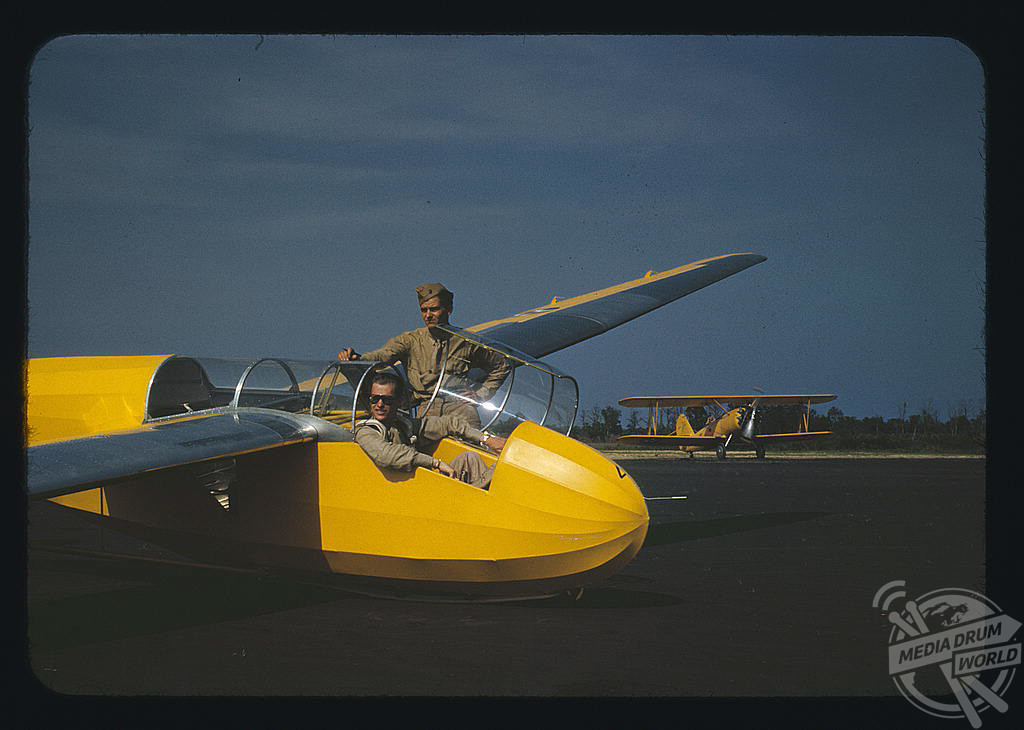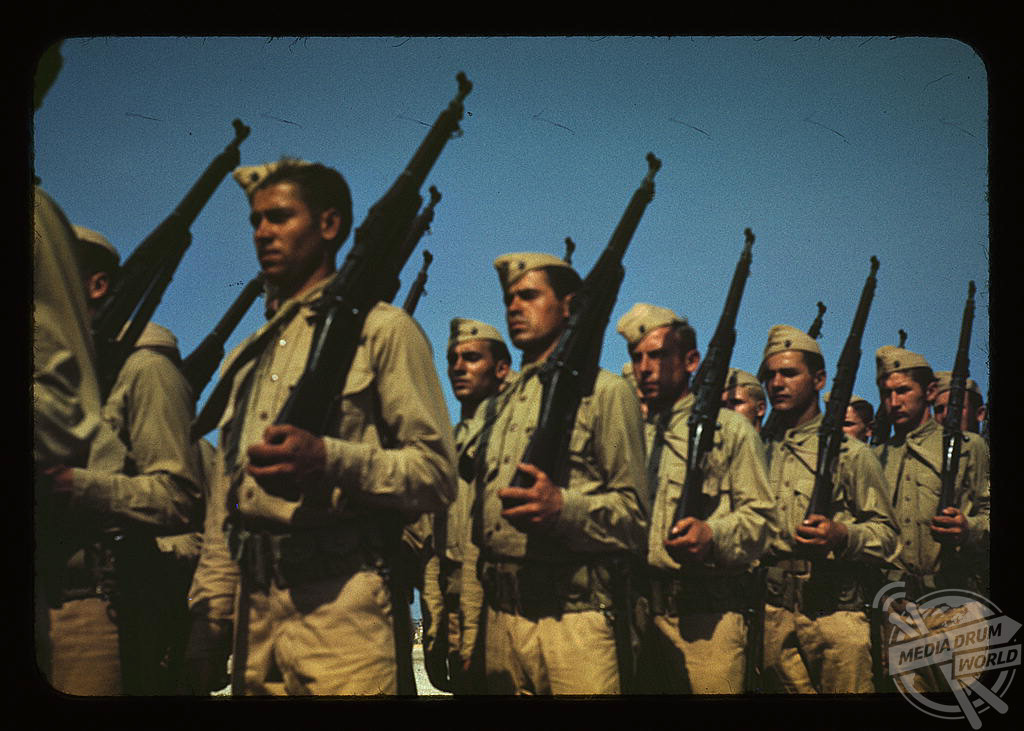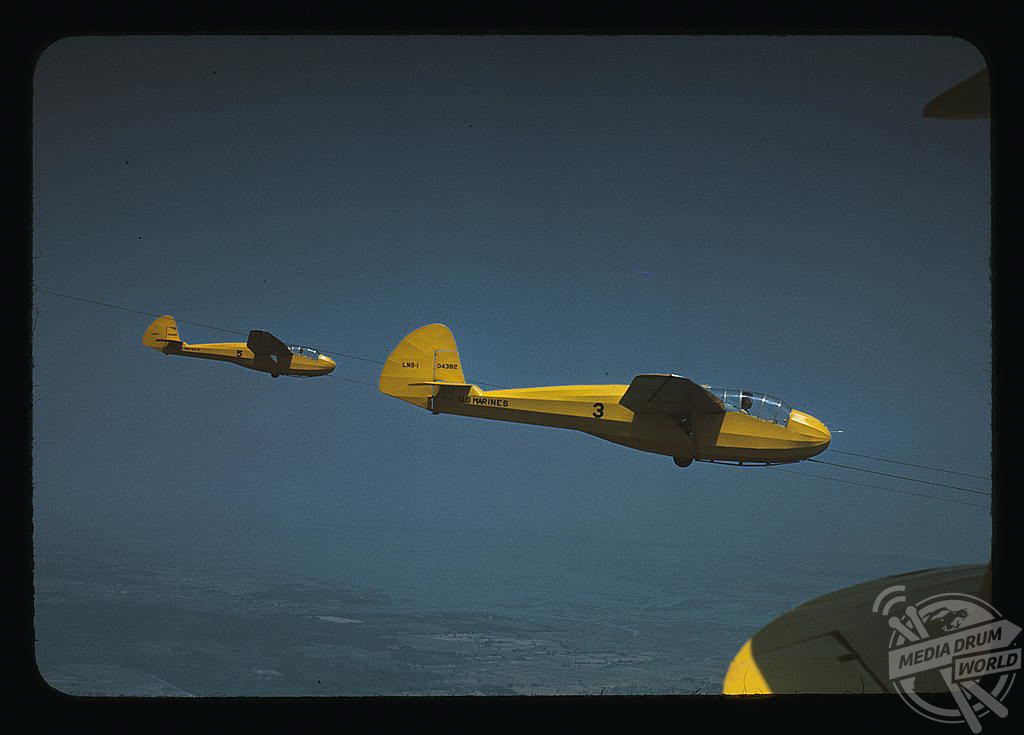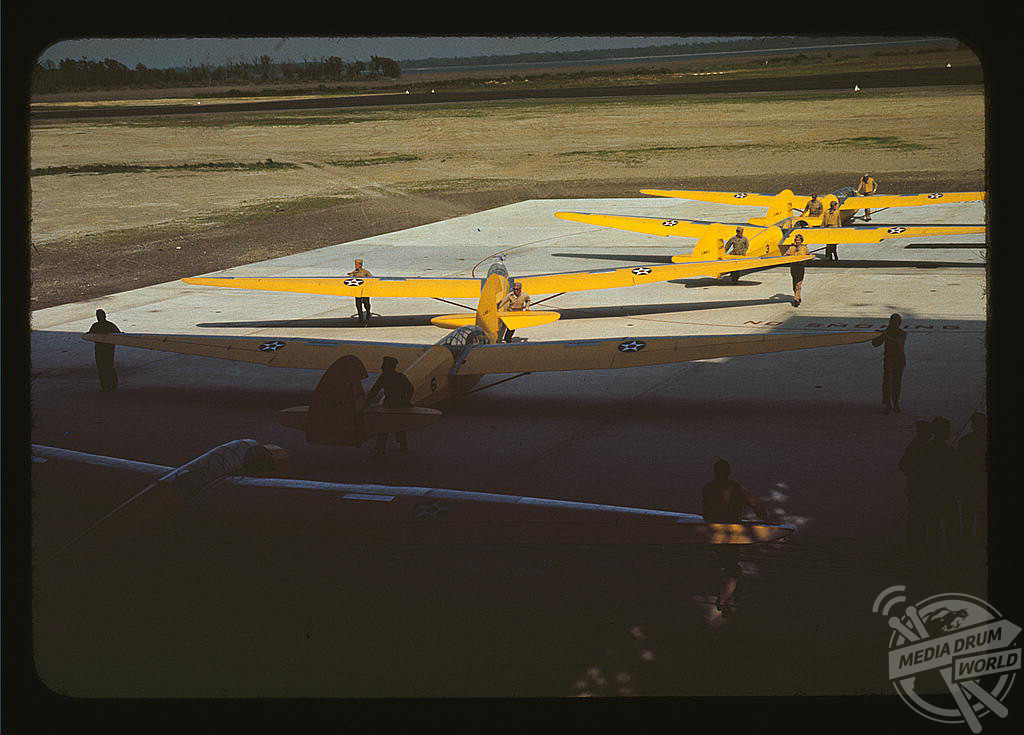By Alex Jones
STUNNING colour photos from the Second World War capture US Marines training to fly in lightweight gliders designed to help them gain the upper hand in the brutal Pacific War – but which were never actually used in combat.
Remarkable photos, taken in May 1942 using Kodachrome film, show recruits at Parris Island, South Carolina, prepping themselves for airborne action. The striking shots include a group of US Marines glider pilots listening intently to a briefing, an anxious looking recruit watching a fellow trainee take off, and gliders soaring whilst visibly being towed along by ropes.

Following the Pearl Harbour attack in 1941 which brought the USA into the Second World War, the United States realised its air force was under equipped to compete in a global war. It began urgently constructing planes – over 275,000 aircraft during the second World War – but also investigated other methods of airborne travel.

Noting the success of the German glider operations in the Second World War – many of the Luftwaffe pilots had learnt to fly in gliders as the Treaty of Versailles had heavily restricted Germany’s aeroplane manufacturing industry – the USA quickly implemented a glider programme of their own. It was envisioned that the gliders would allow for a quick, controlled, and relatively risk-adverse method of deploying a troop of Marines almost anywhere in the Pacific theatre at short notice.
The US Navy quickly procured a number of Schweizer LNS-1 two-seat gliders and assigned them to Glider Group 71, based at the Glider Pilot Training Centre at Page Field, Parris Island – the famed home of the US Marines.

It quickly became apparent that the gliders were of little value to the unit however. The heavier assault gliders – which could deliver up to 24 men at once rather than just two – were so dissimilar to the LNS-1 that learning to fly the sailplane proved to be a waste of valuable training hours. Furthermore, it became increasingly apparent that there would be very few, if any, suitable landing sites for the non-amphibious gliders on the small atolls and in the jungles of the Pacific, where the Marine Corps was primarily focused.

In June 1943, the programme was quietly scrapped and trainees were transferred to more traditional flying units.
These rare colour photos, collected by the United States Office of War Information by photographer Alfred Palmer, are a testament to the doomed glider project.







